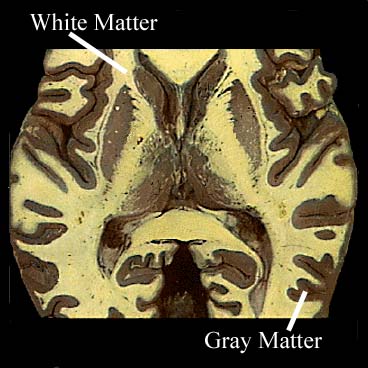The central nervous system comprises the brain and the spinal cord. In general, the central nervous system is responsible for the integrative functions of the nervous system. Information about internal structures and the world around us is carried to the spinal cord, where it is subsequently carried to the brain. Our brains receive the information, send it to many different locations in the brain for interpretation, make decisions about the information, and then put together a response that is shipped down the spinal cord and back out to the periphery. In addition to forming motor responses to the information that reaches the brain, the brain also uses the information to perform our most complicated human functions: intellect, emotion, behavior, memory, learning, etc. The spinal cord acts primarily as a highway for information from the brain to the periphery; however, it also performs some basic integrative functions such as reflexes.
Structurally speaking, the central nervous system is unique from the rest of the body in that it consists only of blood vessels and nervous tissue. You may have heard the brain referred to as "gray matter". This term comes from the appearance of cell bodies and unmyelinated axons in the nervous system. The exterior surface of the brain (the part that touches the inside of the skull) is composed of many millions of neuron cell bodies, which have a grayish color and is thus called "gray matter". Streaming out from those cell bodies and into the center of the brain are myelinated axons, which have a whitish color, and are called "white matter". The spinal cord is arranged in reverse - the myelinated axons (white matter) are on the outside of the spinal cord and the cell bodies (gray matter) are on the inside. The concept of white and gray matter will be revisited in the future, but it is useful now to remember that the brain and spinal cord are opposite in their arrangement of gray and white matter.
|








